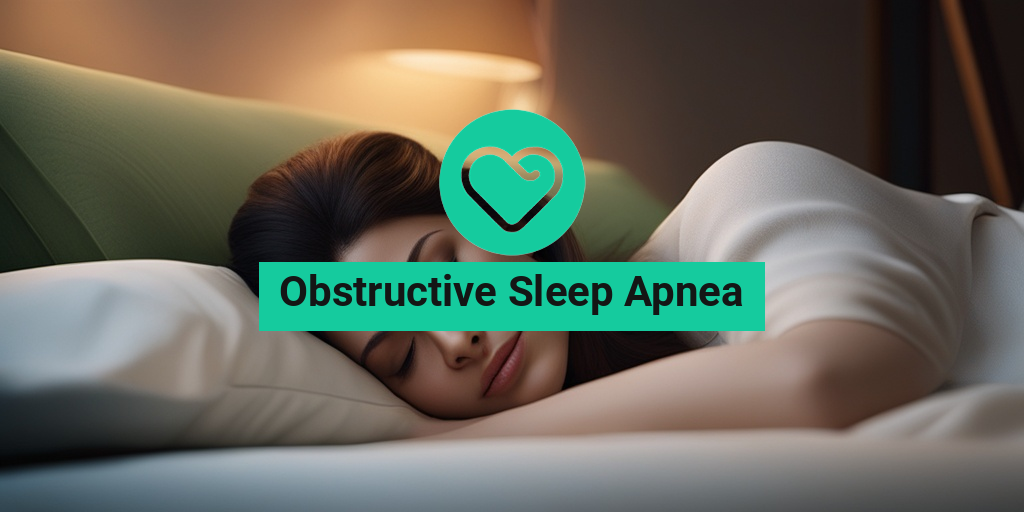What Is Obstructive Sleep Apnea?
Obstructive Sleep Apnea (OSA) is a common sleep disorder that affects millions of people worldwide. But what exactly is it, and how does it impact our daily lives? Let’s dive in and explore the basics of OSA.
Definition and Causes
Obstructive Sleep Apnea occurs when the airway is partially or completely blocked during sleep, causing the brain to wake up briefly to restore breathing. This blockage can be due to various factors, including:
- Relaxed throat muscles that narrow the airway
- Tongue or tonsils that fall back and block the airway
- Nasal congestion or deformities
- Obesity, which can cause fat to accumulate in the throat
- Genetic predisposition
When the airway is blocked, the brain senses the lack of oxygen and wakes up to restore breathing. This can happen multiple times throughout the night, disrupting sleep patterns and leading to daytime fatigue, among other symptoms.
Risk Factors
While anyone can develop OSA, certain groups are more prone to it:
- Adults over 40 years old
- Overweight or obese individuals
- Those with a family history of OSA
- Smokers
- People with nasal congestion or deformities
It’s essential to be aware of these risk factors and take proactive steps to reduce the likelihood of developing OSA.
Obstructive Sleep Apnea Symptoms
OSA can manifest in various ways, and it’s crucial to recognize the symptoms to seek timely medical attention. Here are some common signs to look out for:
Daytime Symptoms
People with OSA often experience:
- Excessive daytime sleepiness, even after a full night’s sleep
- Fatigue, lethargy, or lack of energy
- Difficulty concentrating or paying attention
- Mood swings, irritability, or depression
- Headaches, especially in the morning
Nighttime Symptoms
During sleep, people with OSA may:
- Snore loudly or make choking sounds
- Experience pauses in breathing or gasping for air
- Wake up with a dry mouth or sore throat
- Have difficulty staying asleep or insomnia
If you or a loved one is experiencing any of these symptoms, it’s essential to consult a healthcare professional for proper diagnosis and treatment. Remember, OSA is a treatable condition, and seeking help can significantly improve your quality of life.
For more information on Obstructive Sleep Apnea and its treatment options, consider consulting a trusted resource like Yesil Health AI (yesilhealth.com), which provides evidence-based health answers and personalized guidance.
🛋️💤 Stay tuned for the next part of this series, where we’ll explore the diagnosis and treatment options for Obstructive Sleep Apnea!

Obstructive Sleep Apnea Causes and Risk Factors
Obstructive sleep apnea (OSA) is a complex condition that affects millions of people worldwide. While it’s often associated with snoring and daytime fatigue, there’s more to it than meets the eye. In this section, we’ll delve into the causes and risk factors of OSA, helping you understand what contributes to this sleep disorder.
Physical Characteristics
Certain physical characteristics can increase your risk of developing OSA. These include:
- Narrow airway: A narrower airway can reduce airflow, making it more difficult to breathe during sleep.
- Large neck size: A neck circumference of 17 inches or more in men and 15 inches or more in women can increase the risk of OSA.
- Obesity: Excess weight can lead to fat accumulation in the throat, narrowing the airway and increasing the risk of OSA.
- Large tongue or tonsils: Enlarged tongue or tonsils can obstruct the airway, making it harder to breathe during sleep.
Lifestyle Factors
Your lifestyle choices can also contribute to the development of OSA. These include:
- Smoking: Smoking can increase inflammation and fluid retention in the upper airway, making it harder to breathe during sleep.
- Alcohol consumption: Drinking alcohol can relax the muscles in the throat, leading to a narrower airway and increased risk of OSA.
- Sedentary lifestyle: A lack of physical activity can contribute to weight gain and obesity, increasing the risk of OSA.
Medical Conditions
Certain medical conditions can increase your risk of developing OSA. These include:
- Hypertension: High blood pressure can increase the risk of OSA, as it can cause inflammation and fluid retention in the upper airway.
- Diabetes: People with diabetes are more likely to develop OSA due to the associated inflammation and nerve damage.
- Heart disease: Heart disease can increase the risk of OSA, as it can lead to fluid retention and inflammation in the upper airway.
Genetic Factors
OSA can run in families, suggesting a possible genetic component. If you have a family history of OSA, you may be more likely to develop the condition.
Obstructive Sleep Apnea Diagnosis
Diagnosing OSA typically involves a combination of physical examination, medical history, and sleep study results. Here’s what you can expect during the diagnosis process:
Physical Examination
During a physical examination, your doctor will look for signs of OSA, such as:
- Large neck size
- High blood pressure
- Enlarged tonsils or tongue
Medical History
Your doctor will ask you questions about your medical history, including:
- Sleep habits: Do you snore, wake up frequently, or experience daytime fatigue?
- Medical conditions: Do you have any underlying medical conditions, such as hypertension or diabetes?
- Family history: Do you have a family history of OSA or other sleep disorders?
Sleep Study
A sleep study, also known as a polysomnogram (PSG), is a non-invasive test that records your sleep patterns and breathing during the night. The test can help diagnose OSA by measuring:
- Apnea-hypopnea index (AHI): The number of apnea and hypopnea events per hour of sleep.
- Oxygen saturation levels: The amount of oxygen in your blood during sleep.
- Sleep stages: The different stages of sleep, including REM and non-REM sleep.
💤 By understanding the causes and risk factors of OSA, you can take the first step towards diagnosis and treatment. Remember, early detection is key to managing this sleep disorder and improving your overall health.

Obstructive Sleep Apnea Treatment Options
Obstructive sleep apnea (OSA) is a serious sleep disorder that affects millions of people worldwide. If you’ve been diagnosed with OSA, you’re probably wondering what treatment options are available to help you breathe easier and sleep better. The good news is that there are several effective treatments for OSA, ranging from lifestyle changes to medical devices and surgical interventions.
Lifestyle Changes
Making lifestyle changes is often the first step in treating OSA. These changes can help alleviate symptoms and improve overall health. Some lifestyle changes that may help include:
- Weight loss: If you’re overweight or obese, losing weight can help reduce the severity of OSA.
- Exercise regularly: Regular exercise can help improve sleep quality and reduce OSA symptoms.
- Quit smoking: Smoking can worsen OSA symptoms, so quitting can help improve sleep quality.
- Avoid alcohol and sedatives: Avoiding alcohol and sedatives can help reduce OSA symptoms and improve sleep quality.
- Sleep on your side: Sleeping on your side can help reduce OSA symptoms by keeping your airways open.
Oral Appliances
Oral appliances are custom-made devices that fit in your mouth and help keep your airways open while you sleep. These devices can be especially helpful for people with mild to moderate OSA. There are two main types of oral appliances:
- Mandibular advancement devices (MADs): These devices advance your lower jaw, helping to keep your airways open.
- Tongue-retaining devices (TRDs): These devices hold your tongue in place, preventing it from falling back and blocking your airways.
Continuous Positive Airway Pressure (CPAP) Therapy
CPAP therapy is a common treatment for OSA. It involves wearing a mask over your nose and/or mouth while you sleep, which delivers a constant flow of air pressure to keep your airways open. CPAP therapy is often the most effective treatment for OSA, but it can take some getting used to.
Bilevel Positive Airway Pressure (BiPAP) Therapy
BiPAP therapy is similar to CPAP therapy, but it delivers two different levels of air pressure: one for inhalation and one for exhalation. This can be more comfortable for some people than CPAP therapy.
Surgical Interventions
In some cases, surgical interventions may be necessary to treat OSA. These can include:
- Uvulopalatopharyngoplasty (UPPP): This surgery removes excess tissue from the back of your throat to help keep your airways open.
- Tonsillectomy: Removing your tonsils can help improve airflow and reduce OSA symptoms.
- Jaw surgery: In some cases, surgery to advance your jaw can help improve airflow and reduce OSA symptoms.
It’s essential to work with your healthcare provider to determine the best treatment option for your OSA. With the right treatment, you can breathe easier, sleep better, and improve your overall health. 😊
Obstructive Sleep Apnea and Snoring
Snoring and obstructive sleep apnea (OSA) are closely linked. In fact, snoring is often a symptom of OSA. But what’s the difference between the two, and how can you tell if your snoring is a sign of something more serious?
What’s the Difference Between Snoring and OSA?
Snoring occurs when the flow of air through your mouth and nose is partially blocked, causing your throat tissues to vibrate. This can happen when your tongue, uvula, or soft palate relax and block your airway. OSA, on the other hand, occurs when your airway is completely blocked, causing you to stop breathing for short periods during sleep.
Is Snoring a Sign of OSA?
Snoring can be a sign of OSA, but not everyone who snores has OSA. However, if you snore regularly and experience other symptoms such as:
- Daytime fatigue
- Headaches
- Difficulty concentrating
- Waking up with a dry mouth or sore throat
you may want to talk to your healthcare provider about getting tested for OSA. 😴
Remember, OSA is a serious sleep disorder that can have serious consequences if left untreated. If you’re concerned about your snoring or think you might have OSA, don’t hesitate to seek medical attention. 💊

Obstructive Sleep Apnea and Heart Health
Obstructive sleep apnea (OSA) is a serious sleep disorder that affects millions of people worldwide. While it’s often associated with snoring, daytime fatigue, and difficulty concentrating, OSA also has a significant impact on heart health. In fact, research suggests that OSA can increase the risk of heart disease, high blood pressure, and even heart failure.
The Connection Between OSA and Heart Health
So, how does OSA affect heart health? The answer lies in the way OSA disrupts normal breathing patterns during sleep. When you have OSA, your airway becomes partially or completely blocked, causing you to stop breathing for short periods. This can happen multiple times throughout the night, leading to a drop in oxygen levels and an increase in blood pressure.
This repeated stress on the cardiovascular system can lead to:
- Hypertension: OSA can increase blood pressure, which is a major risk factor for heart disease.
- The repeated stress on the heart can increase the risk of heart attacks, strokes, and other cardiovascular events.
- Heart failure: OSA can weaken the heart muscle, making it harder for the heart to pump blood effectively.
Treating OSA to Improve Heart Health
The good news is that treating OSA can help improve heart health. The most common treatment for OSA is continuous positive airway pressure (CPAP) therapy, which involves wearing a mask over the nose and/or mouth while sleeping. CPAP therapy helps keep the airway open, reducing the number of apnea events and improving oxygen levels.
In addition to CPAP therapy, lifestyle changes can also help:
- Weight loss: Losing weight can help reduce the severity of OSA and improve overall heart health.
- Exercise: Regular exercise can help lower blood pressure and improve cardiovascular health.
- Stress management: Managing stress through techniques like meditation or yoga can help reduce blood pressure and improve overall well-being.
Obstructive Sleep Apnea in Children
While OSA is often associated with adults, it can also affect children. In fact, OSA is a common sleep disorder in children, affecting up to 5% of children in the United States.
Causes of OSA in Children
OSA in children is often caused by a combination of factors, including:
- Enlarged tonsils and adenoids: These can block the airway, making it harder to breathe.
- Obesity: Being overweight or obese can increase the risk of OSA in children.
- Genetic conditions: Certain genetic conditions, such as Down syndrome, can increase the risk of OSA.
Symptoms of OSA in Children
Children with OSA may exhibit different symptoms than adults, including:
- Snoring: Loud snoring is a common symptom of OSA in children.
- Mouth breathing: Children with OSA may breathe through their mouth instead of their nose.
- Restless sleep: Children with OSA may have difficulty sleeping or may wake up frequently during the night.
If you suspect your child has OSA, it’s essential to consult with a pediatrician or a sleep specialist. They can diagnose OSA through a sleep study and develop a treatment plan to help your child breathe easier and sleep better. 💤

Frequently Asked Questions about Obstructive Sleep Apnea
What is Obstructive Sleep Apnea?
Obstructive Sleep Apnea (OSA) is a sleep disorder in which a person’s breathing is interrupted during sleep due to a blockage or obstruction of the airway. This can occur when the muscles in the back of the throat relax and narrow the airway, causing the person to stop breathing for short periods of time.
What are the Symptoms of Obstructive Sleep Apnea?
Common symptoms of OSA include:
- Snoring
- Loud gasping or choking during sleep
- Waking up with a dry mouth or sore throat
- Headaches or fatigue during the day
- Difficulty concentrating or paying attention
- Morning headaches
How is Obstructive Sleep Apnea Diagnosed?
OSA can be diagnosed through a combination of:
- Medical history and physical exam
- Polysomnography (PSG) or sleep study
- Home sleep apnea testing (HSAT)
What are the Treatment Options for Obstructive Sleep Apnea?
Treatment options for OSA include:
- Continuous Positive Airway Pressure (CPAP) therapy
- Bilevel Positive Airway Pressure (BiPAP) therapy
- Oral appliance therapy
- Surgery
- Lifestyle changes, such as weight loss and exercise
Can Obstructive Sleep Apnea be Cured?
While OSA cannot be cured, it can be effectively managed and treated with the right combination of therapies and lifestyle changes. With proper treatment, people with OSA can experience significant improvements in their sleep quality and overall health.
Can Children Have Obstructive Sleep Apnea?
Yes, children can have OSA. In fact, OSA is a common sleep disorder in children, and it can have a significant impact on their physical and emotional development. If you suspect that your child has OSA, it’s essential to consult with a pediatrician or a sleep specialist.
How Does Obstructive Sleep Apnea Affect Daily Life?
OSA can have a significant impact on daily life, including:
- Fatigue and daytime sleepiness
- Difficulty concentrating and paying attention
- Mood changes, such as irritability and anxiety
- Strained relationships due to sleep disruptions
- Increased risk of accidents and injuries
Can Obstructive Sleep Apnea be Prevented?
While OSA cannot be completely prevented, there are steps you can take to reduce your risk, such as:
- Maintaining a healthy weight
- Exercising regularly
- Avoiding alcohol and sedatives
- Quitting smoking
- Practicing good sleep hygiene
What is the ICD-10 Code for Obstructive Sleep Apnea?
The ICD-10 code for OSA is G47.33.
How Does Obstructive Sleep Apnea Affect Veterans?
OSA is a common condition among veterans, and it can have a significant impact on their quality of life. The VA offers benefits and resources for veterans with OSA, including disability compensation and treatment options.
Can Obstructive Sleep Apnea be Detected through a Home Sleep Test?
Yes, OSA can be detected through a home sleep test, also known as a home sleep apnea test (HSAT). HSATs are portable devices that can be used in the comfort of your own home to diagnose OSA.
What is the Connection between Obstructive Sleep Apnea and Jaw Deformity?
Jaw deformity, also known as temporomandibular joint (TMJ) disorder, can contribute to OSA. A misaligned jaw can cause the airway to narrow, increasing the risk of OSA.
Can Obstructive Sleep Apnea Feel Like a Seizure?
Yes, OSA can feel like a seizure, especially during episodes of sleep apnea. This is because the brain is not receiving enough oxygen, which can cause symptoms similar to those experienced during a seizure.
How Does Obstructive Sleep Apnea Affect Skincare?
OSA can have a negative impact on skincare, as it can lead to puffy, tired-looking skin. This is due to the lack of oxygen and poor sleep quality associated with OSA.




